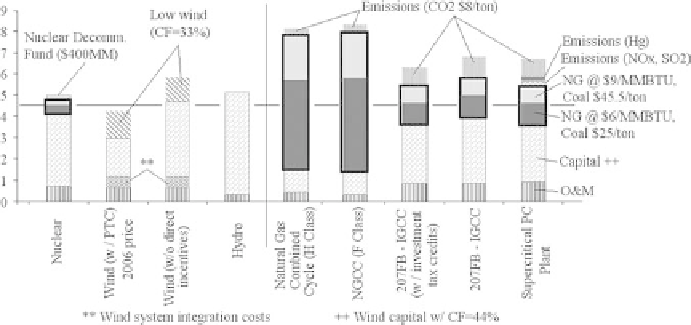Environmental Engineering Reference
In-Depth Information
Figure 6: Generating alternatives
−
North America 20 Yr LCoE, $c/kWh.
with traditional forms of electricity production. Figure 6 is an example showing
the current fi nancial merits for a range of mainstream electric power generation
technologies [ 15 ].
There will not be pressure to produce new and better WT designs if the economics
are unfavourable. When fossil fuel prices are low, most customers will not be moti-
vated to purchase renewables unless there are incentives, usually resulting from gov-
ernment policy. Whether it is a WT or a traditional fossil fuel-based electricity option,
using value analysis is the key to guiding an organization's decision to proceed.
2.4 Critical to quality (CTQ) attributes
The fi rst step of a new turbine design is to identify the critical few characteristics
that make all the others seem trivial. These provide a common set of goals and
clarify the critical attributes that will help focus the design across a wide range of
operational environments.
Entry into the 21st century coincided with the maturity of large-scale WT man-
ufacturing capability. Prior to this, WT designers and manufacturers were rela-
tively small start-ups by entrepreneurs and environmental enthusiasts. For the
most part, these start-ups did not fully understand the importance of value analysis
and risk mitigation. This has all changed with the entry of industry participants
striving for new WT designs that have the lowest capital expense, the lowest O&M
costs, and the highest availability.
3 The product design process
Truly great new products follow a disciplined design process. This is especially
true for large rotating equipment such as a modern MW-size WT. A large collec-
tion of people and skills must be brought together in an environment where the
people can exchange information and build on each other's ideas. The primary

Search WWH ::

Custom Search